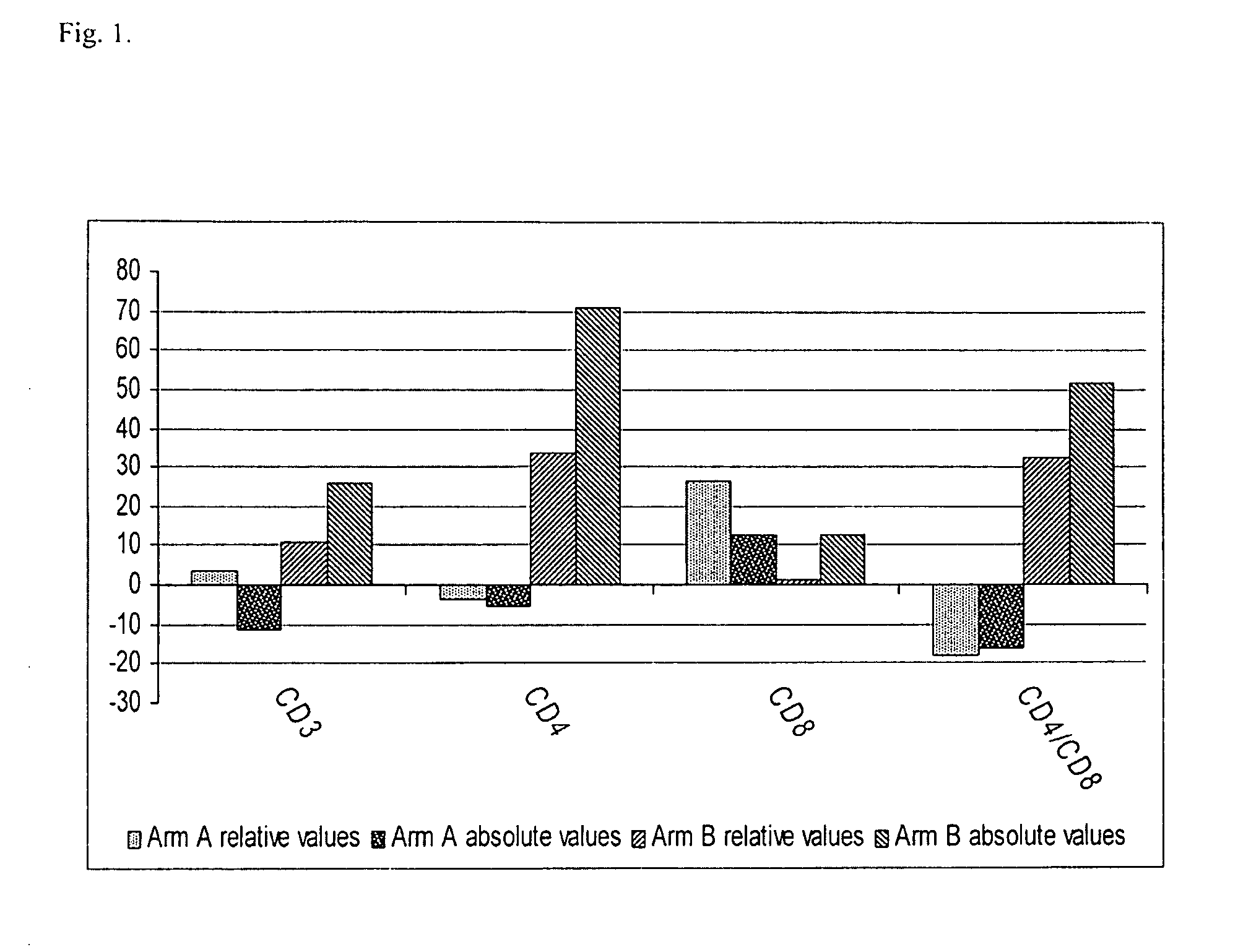Composition and methods of use of an immunomodulator
- Summary
- Abstract
- Description
- Claims
- Application Information
AI Technical Summary
Benefits of technology
Problems solved by technology
Method used
Image
Examples
example 1
Preparation of an Exemplary Herb Extract No. 1
[0050]One kilogram of each of the following dried herbs is separately mechanically pulverized: Inula helenium, Foeniculum vulgare, Juniperus communis, Glycyrrhiza glabra, Oreganum majorana, Calendula officinalis, Rosa canina, and Thymus serpyllum. Each of the powdered herbs is separately mixed and suspended in 5 liters of 95% aqueous ethyl alcohol with occasional agitation for two days. Each suspension is decanted, the respective supernate is filtered through a paper filter, and the extract is collected. Each extract is stored in dark bottles at about 20° C. for up to a year.
[0051]To prepare a therapeutic mixture, 500 ml of each extract is combined.
example 2
Preparation of an Exemplary Herb Extract No. 2
[0052]For set No. 1 of Composition No. 1, one kilogram of each of the following dried herbs is separately ground to a powder: Aloe (Aloe arborescens), Common knotgrass (Polygonum aviculare), Yarrow (Achillea millefolium), Purple coneflower (Echinacea purpurea), St. John's Wort (Hypericum perforatum), Centaury (Centaurium erythraea), Snowball tree berries (Viburnum opulus), Nettle (Urtica dioica), Dandelion (Taraxacum officinale), Sweet-sedge (Acorus calamus), Oregano (Oreganum majorana), Marigold (Calendula officinalis), Seabuckthorn berries (Hippophae rhamnoides), Elecampane (Inula helenium), Tormentil (Potentilla erecta), Greater plantain (Plantago major), Wormwood (Artemisia sp.), Siberian golden root (Rhodiola rosea), Cudweed (Gnaphalium uliginosum), Licorice (Glycyrrhiza glabra), Fennel (Foeniculum vulgare), Chaga (Inonotus obliquus), Thyme (Thymus vulgaris), Three-lobe Beggarticks (Bidens tripartite), Sage (Salvia officinalis), Dog...
example 3
Patient Population—HIV Studies
[0056]In this trial, 70 male or female adults with HIV / AIDS were enrolled. See Table 1. Most of them were hepatitis virus C (HCV) co-infected, with a significant proportion of them suffering from alcohol abuse or / and drug addiction. Significant metabolic disorders and underlying hepatic injury caused by chronic alcohol, drug addiction, and hepatitis co-infection were common for this study cohort. At study initiation 21% had active opportunistic infections and 71% had grade 3 or more laboratory or clinical abnormalities. Patients were divided into three arms, with comparable baseline characteristics. All participants were antiretroviral drug naive. Each participant provided an informed consent and was free to withdraw from the study at any time. All patients were given symptomatic therapy for opportunistic infections if required. The trial was designed to continue until the last enrolled patient reached 48 weeks on therapy.
[0057]After in...
PUM
 Login to View More
Login to View More Abstract
Description
Claims
Application Information
 Login to View More
Login to View More - R&D
- Intellectual Property
- Life Sciences
- Materials
- Tech Scout
- Unparalleled Data Quality
- Higher Quality Content
- 60% Fewer Hallucinations
Browse by: Latest US Patents, China's latest patents, Technical Efficacy Thesaurus, Application Domain, Technology Topic, Popular Technical Reports.
© 2025 PatSnap. All rights reserved.Legal|Privacy policy|Modern Slavery Act Transparency Statement|Sitemap|About US| Contact US: help@patsnap.com


